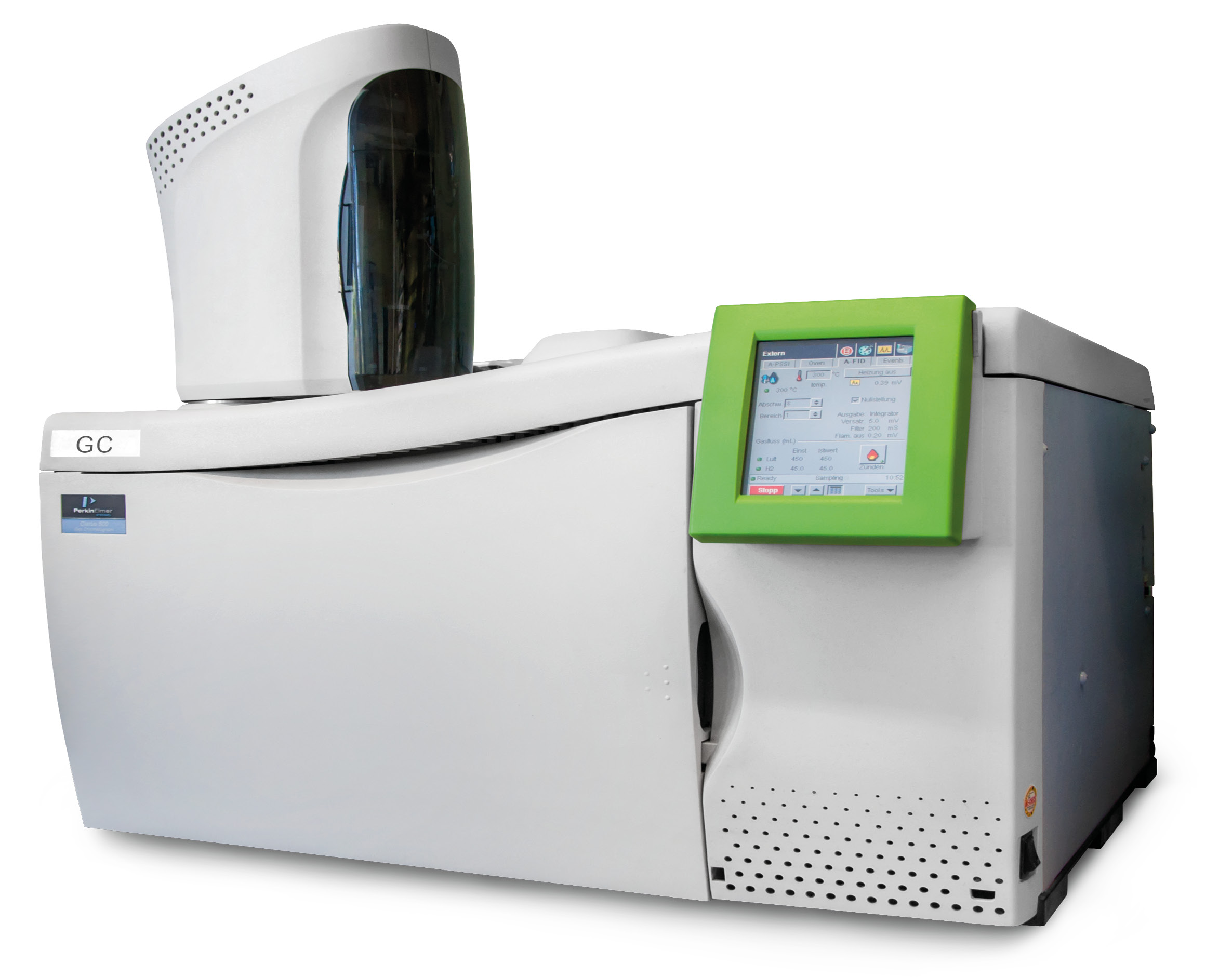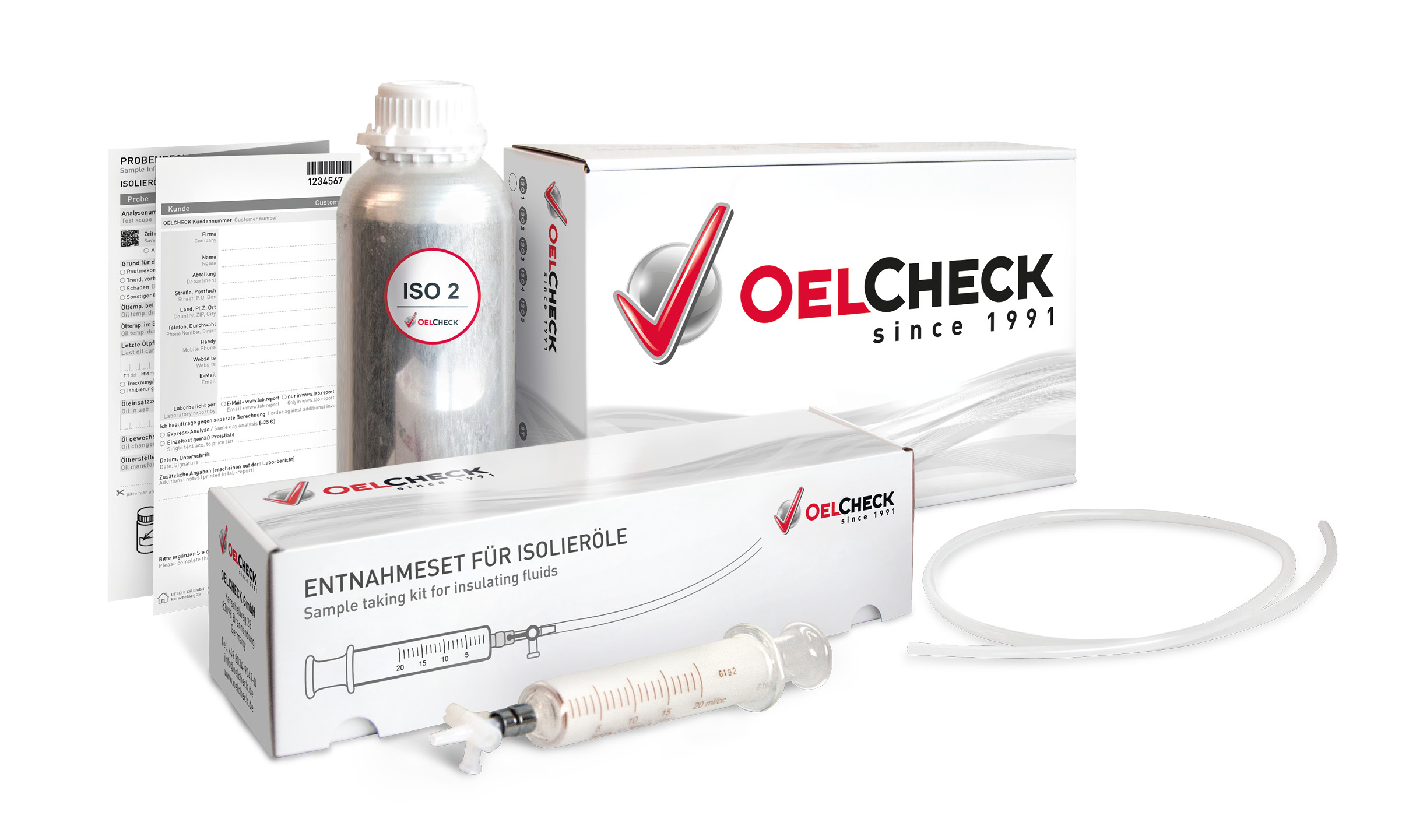Gas chromatographs in use
Year of publication: 2020
Fuel in engine oil – Too much is unhealthy
In the OELCHECK laboratory, the fuel content of all used engine oils from diesel, petrol and biodiesel engines, with the exception of oils from gas engines, is tested with the gas chromatograph. As the components of fuels generally have a lower boiling point than those of engine oils, they can be separated from each other and quantified using gas chromatography. The laboratory report specifies the percentages of the respective fuels in % (m/m).
Unburned fuel can always get into the engine oil during fuel combustion in the engine. However, if it contains too much fuel, its viscosity decreases and a wear-protecting lubricating film can no longer build up reliably.
![[Translate to "English"] Gaschromatograph [Translate to "English"] Gaschromatograph](/fileadmin/_processed_/1/2/csm_gaschromatograph_a2712d7fa6.png)
Table of contents
Increased fuel input can be due to a wide variety of causes:
- Frequent cold starts with formation of condensation
- Extreme stop-and-go operation
- Condensation of blow-by gases due to incorrectly set carburettor or poor timing
- Incomplete combustion due to insufficient compression as a result of worn cylinders or piston rings
- Incorrect fuel/air mixture due to blocked air filter, damaged inlet or outlet valves
- Incorrectly set ignition time, defective injection nozzles, burnt spark plugs
- When using biodiesel (RME, FAME), it must be noted that this type of fuel has a higher boiling temperature than fossil diesel and vaporises less well at operating temperature.
OELCHECK tribologists have defined limit and warning values for the permissible fuel content for different engine and fuel types.
Rule of thumb: The engine oil of a petrol engine should never contain more than 1-2 % fuel. For diesel engines, the limit value is 5-7 %. In operation with pure biodiesel (B100), a share of more than 6 % is usually considered critical.
Ethylene glycol in engine/ transmission oils – The indicator for coolant contamination
The headspace gas chromatograph in the OELCHECK laboratory is used for this analysis. This detects even very low levels of ethylene glycol, the clear indicator of coolant contamination, with high precision.
The analysis must be commissioned as an individual test. In the laboratory report, the GC glycol content in mg/kg is indicated under the heading “Contamination”.
Headspace gas chromatography is a special variant of the GC procedure to separate volatile components of a substance mixture from non-volatile or hardly volatile constituents. First, a reagent is added to the oil sample which derivatises the ethylene glycol contained in the sample. The oil sample is then heated to 120 °C in a tightly sealed glass bottle. The volatile components – including the derivatised ethylene glycol – evaporate. This vapour is collected and a sample separated from it. All the components contained in the vapour are then separated according to their boiling points in the gas chromatograph. The ethylene glycol is detected precisely. This method provides even more accurate data than the FT infrared spectroscopy routinely performed for all analysis kits.
Particularly in the case of increased water content, detection of glycol in the engine or transmission oil provides a clear indication that coolant has entered into the oil circuit. If glycol is detected in the oil, it is very important to check how the coolant entered the lubricating oil. The most common cause in internal combustion engines is a defective seal. With a transmission oil cooler, the pipes, which usually contain copper, can be corroded in such a way that leaks have formed.
“Simulated distillation” – Fuels in the spotlight
Commercially available fuels vaporise at different temperatures. The vaporisation process is simulated as distillation with the gas chromatograph. The distillation process is recorded in a boiling profile. The data obtained is compared with the standardised characteristic values of the individual fuel types.
This shows whether fossil diesel or biodiesel meet the requirements of the standard. Incorrect refuelling or impurities, such as petrol with diesel, diesel with biodiesel, can also be clearly detected. Even a mixture of conventional fuels with vegetable oil is visible. However, such contamination is usually detected by other test methods, such as FT-IR spectroscopy or viscosity change.
For diesel fuel, the cetane index, a measure of ignitability in accordance with EN 590, can also be determined with the help of the “simulated distillation” and the density. The cetane index provides information on the speed of self-ignition of the diesel fuel after injection. The higher the cetane index, the better the diesel grade because the time between injection and combustion decreases and the ignitability increases.
Fossil diesel fuel, which must contain 7 % biodiesel according to the standard, must have a cetane index of at least 46. Diesel fuels with a higher biodiesel content of 10, 30 or even 100 % have a lower cetane index. If a borderline value or even lower value is determined in the analysis performed in the OELCHECK laboratory, this indicates a diesel whose biodiesel content is higher than in EN 590 and whose use can cause a reduction in engine performance or ignition problems.
The evaporation loss – Specialist for special cases
Measurement of evaporation loss is an extension of the “simulated distillation”. OELCHECK performs determination of the evaporation loss with the gas chromatograph as an individual analysis that must be commissioned separately. It is used, among other things, for the assessment of mostly synthetic base oils selected for the formulation of new engine or compressor oils. Completely formulated high-temperature lubricants, such as those used for lubrication of chains in furnace systems, glass and chipboard production as well as in film stretching lines, can thus be assessed before practical use.
During the analysis, an oil sample is heated in the injector of a gas chromatograph and its components are differentiated in a separating column depending on their rising boiling temperature. The diagram of the boiling process is divided into equidistant intervals of 1 % of the total area. In each of these intervals, the measured mass fraction of the sample is multiplied by a specific evaporation loss factor. The higher the boiling temperature, the smaller this factor. It is necessary to include the loss factor in calculation as this measurement is not a real distillation, but a simulated one. The calculation determines a partial evaporation loss for each interval. These partial evaporation losses then result in the total evaporation loss.
As a result, the evaporation loss of a sample at a temperature of 250 °C can be determined. The most important prerequisite for the measurement using this procedure is that the sample must be fully vaporisable.
Gas-in-oil analysis – Safety for transformers
Insulating oils are intended to prevent voltage flashovers in transformers and extinguish any arcs during switching. They insulate and cool live parts, are characterised by low-temperature and oxidation stability, and harmonise with winding and insulating materials. The oils often remain in use for decades and must be monitored by means of trend analyses. OELCHECK offers five analysis kits especially for transformer oils which permit determination of the gases dissolved in the oil. Besides water determination, this gas-in-oil analysis is the most important analysis for monitoring transformers, as it makes a decisive contribution to operational safety. A special headspace gas chromatograph is used for the analysis. The laboratory report lists values for the respective gases determined in ppm and their total.
Gas-in-oil analysis uses the insulating oil’s ability to dissolve air from the atmosphere as well as cracked gases. These are produced not only due to the natural ageing of oil and insulation materials, but above all when thermal or electrical defects occur in transformers. The extent of a defect and remedial measures can be concluded from the quantity of dissolved gases in the respective oil and their increase over time (trend analysis).
To obtain correct measurement results, the oil sample must not come into contact with the ambient air. OELCHECK therefore equips every all-inclusive analysis kit for transformer oils not only with a hermetically sealable sample bottle, but also with a gas-tight 20 ml glass syringe. Only this must be used to take a sample.
In the laboratory, the type and intensity of the gases contained in the oil are determined with a gas chromatograph. Depending on the intensity of the individual gases, it is then possible to differentiate between different fault types. Conclusions regarding the consequences for the transformer oil or paper insulation can be drawn from the corresponding fault types. These values and their diagnosis are noted in the laboratory report in compliance with evaluation procedures defined in the VDE standard.





